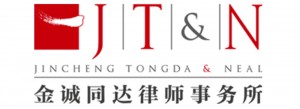The author has previously discussed the importance of a trademark strategy on several occasions. Some rights holders will ask, our business is not very big at the moment, is it really necessary to formulate a trademark strategy like a Fortune 500 corporation? It is true that not all rights holders require a trademark strategy, especially for those whose business are not very large and who do not intend to continue expanding. However, for any business operator that wishes to develop business in China, build brand influence and aim for a leading industry position in future, a trademark strategy is indispensable.

FRANK LIU
金诚同达律师事务所合伙人
Partner
Jincheng Tongda & Neal
Some people have a hard time understanding the importance of a trademark strategy, mainly due to two reasons: (1) unfamiliarity with China’s trademark registration system and the extent of trademark infringement in the market; and (2) a lack of a full appraisal of the adverse consequences that could arise in future as a result of trademark piracy or infringement. If an enterprise lacks a tailored trademark strategy, it may encounter numerous difficulties in protecting its brands in China, and will have difficulties in mounting an effective response when it faces infringement or other conflict of rights.
Negligence of protection in associated trademark classes. There is not a one-to-one correspondence between the classes of goods/services in the Classification of Similar Goods and Services and goods/services in reality. Sometimes one good or service needs to be registered in different appropriate classes. For example, a mobile app may need, at minimum, to be registered in Class 9 (which includes downloadable mobile application software) and Class 42 (which includes computer programming and related services); if other classes of goods or services are involved, registration in the corresponding classes is also necessary.
With socioeconomic development, new goods and services appear all the time. The Classification of Similar Goods and Services needs to be revised in light of changes in goods and services and therefore lags actual classes of goods and services. Accordingly, a rights holder also needs to conduct an examination of its registered trademarks to see whether they can cover relevant new goods and services and determine, on this basis, whether additional trademark registrations are required.
Furthermore, once a brand develops to a certain degree, it is necessary to consider defensive registration. Not only do the types of trademark registration need to be expanded to more related classes, so as to prevent trademark pirates from pirating registrations in related classes, but consideration also needs to be given to the registration of words similar to the existing words in the trademark so as to prevent pirate registration thereof by others, ultimately causing confusion among consumers.
Negligence of subsequent protection and monitoring. In practice, there have been instances where a trademark has ceased to be valid because its rights holder failed to renew its registration before the deadline of renewal. Once trademark rights are lost, there is little that can be done against infringements in the market. More crucially, if registration of the trademark in question is pirated by another, the pirate could, in future, claim that the original rights holder is infringing its trademark. Furthermore, if consideration is given solely to registrations in one’s core classes, without paying attention to applications by others for similar trademarks, there is also the possibility that similar trademarks could be registered; after all, there is a certain degree of subjectivity in examinations of trademark similarity, and if one relies solely on the examinations conducted by the Trademark Office, there is a strong possibility that a similar trademark will be registered due to a failure to file an opposition during the prescribed period. Once the similar trademark is registered, there is no way to directly take civil infringement action against use of such trademark, requiring resolution first by way of a trademark administrative procedure. Furthermore, if the rights holder focuses attention solely on trademarks, neglecting to monitor relevant enterprise names, the registration by another of the rights holder’s trademark as an enterprise name could occur; and if action is not taken promptly and the registration and use of the enterprise name in question continues for a relatively long time, the protection of rights in future will become much more difficult. Furthermore, there are also instances where a trademark is preemptively registered by another as a domain name, etc.
Consequences of inadequate measures. As some rights holders feel that trademark infringement does not have a large impact on their business, they ignore and tolerate it, but ultimately suffer losses and damages. In practice, there have been a number of cases where, after trademark registration, the rights holder failed to promptly put a halt to infringement in the market, resulting in dilution of its trademark into a generic name. For example “U盘 (Chinese word for ‘USB drive’)” and “nylon” were originally registered trademarks, but from a position of great notoriety they have been diluted into generic names that can be used by all free of charge. Furthermore, offensives against infringement in the absence of an overall strategy will usually be limited to surface infringement phenomena and will fail to reach down to the root of the infringement. An effective offensive against infringement will not only consist of taking action against the infringing product/service, but also against the root of the infringement (e.g., the actual controller of the infringer and the basis of its rights). Only in this way can the infringer be prevented from continuing its infringement by establishing a new infringing entity or authorizing a new infringing agent.
The lack of a trademark strategy will also give rise to a situation where one faces numerous indications of infringement online and in the market but without a clue on how to deal with them; or lead to taking action without assessing the minor and the serious, the non-urgent and the urgent, missing the best opportunity to strike, or being unable to effectively strike against the infringement due to only taking a single action and ending up paying significant charges as a result. Furthermore, during the past 10 years, there has also been a tremendous change in infringement itself. Simple counterfeiting or passing off is dwindling, whereas more complex instances of infringement, such as the offshore entity controlled by the infringer registering a similar trademark and then licensing the manufacture and sale of the infringing product to a domestic infringing entity, are becoming more and more common. In the absence of a suitable trademark strategy, it is very difficult to respond to such ever-increasing complex infringement strategies.
Frank Liu is a partner at Jincheng Tongda & Neal
中国上海浦东新区世纪大道201号
渣打银行大厦9层 邮编: 200120
9th Floor, Standard Chartered Tower
No. 201 Century Avenue, Shanghai 200120, China
电话 Tel: (8621) 3886-2288
传真 Fax: (8621) 3886-2288*1018
电子信箱 E-mail:
frankliu@jtnfa.com






















